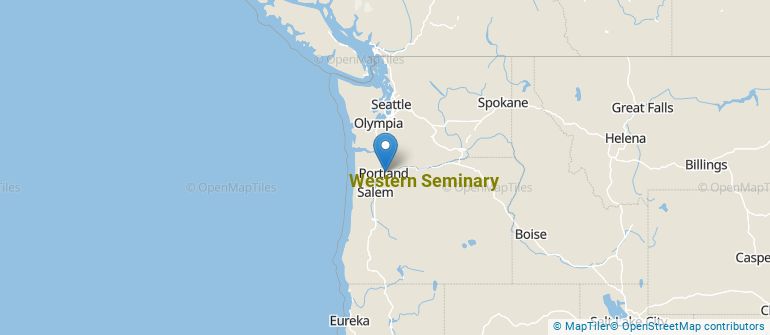 by our College Data Analytics Team
by our College Data Analytics TeamExplore the best ranked schools for the programs you are most interested in.
Western Seminary-San Jose was not ranked in College Factual's 2025 Best Overall Colleges report. This could be for a number of reasons, including lack of data.
Data for the student to faculty ratio for this school has not been reported.
Another measure that is often used to estimate how much access students will have to their professors is how many faculty members are full-time. The idea here is that part-time faculty tend to spend less time on campus, so they may not be as available to students as full-timers.
The full-time faculty percentage at Western Seminary is 30%. This is lower than the national average of 47%.
Get more details about the location of Western Seminary.

Contact details for Western Seminary-San Jose are given below.
| Contact Details | |
|---|---|
| Address: | 5511 Se Hawthorne Blvd, Portland, OR 97215-3367 |
| Phone: | 503-517-1800 |
| Website: | www.westernseminary.edu/ |
| Most Popular Majors | Bachelor’s Degrees | Average Salary of Graduates |
|---|---|---|
| Theological & Ministerial Studies | 137 | NA |
| Mental & Social Health Services | 30 | NA |
| Multicultural & Diversity Studies | 3 | NA |
| Missionary Studies | 3 | NA |
Online learning is becoming popular at even the oldest colleges and universities in the United States. Not only are online classes great for returning adults with busy schedules, they are also frequented by a growing number of traditional students.
In 2022-2023, 470 students took at least one online class at Western Seminary. This is a decrease from the 522 students who took online classes the previous year.
| Year | Took at Least One Online Class | Took All Classes Online |
|---|---|---|
| 2022-2023 | 470 | 402 |
| 2021-2022 | 522 | 356 |
| 2020-2021 | 495 | 325 |
| 2018-2019 | 315 | 181 |
Footnotes
*The racial-ethnic minorities count is calculated by taking the total number of students and subtracting white students, international students, and students whose race/ethnicity was unknown. This number is then divided by the total number of students at the school to obtain the racial-ethnic minorities percentage.
References
More about our data sources and methodologies.